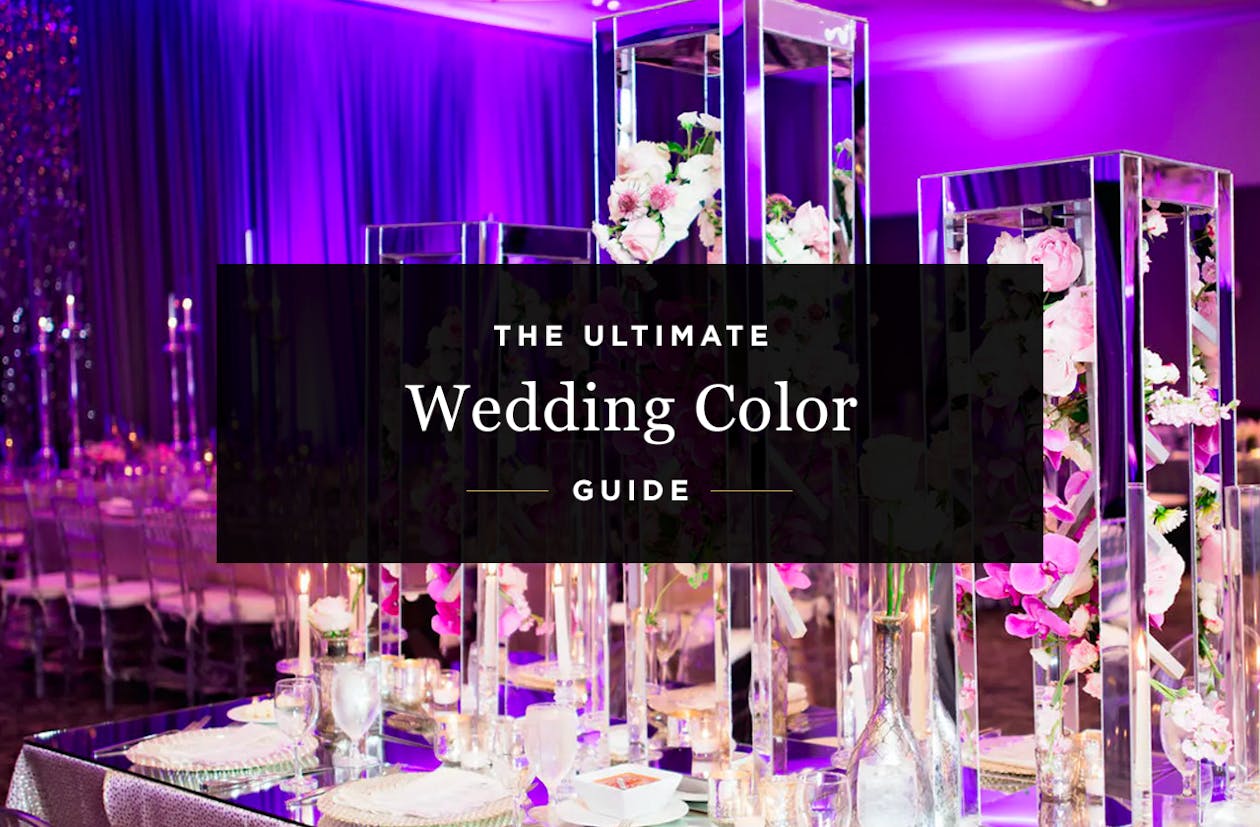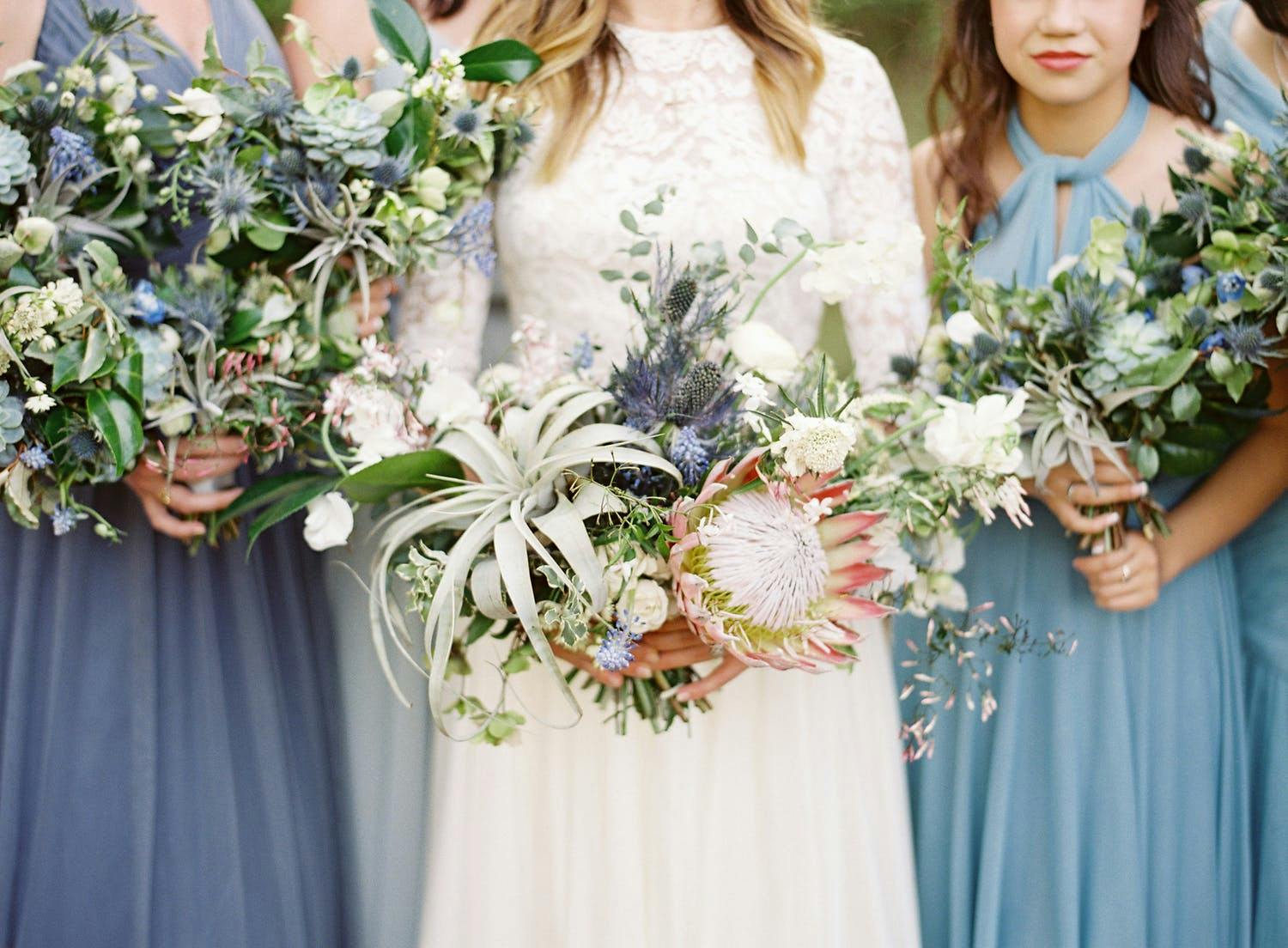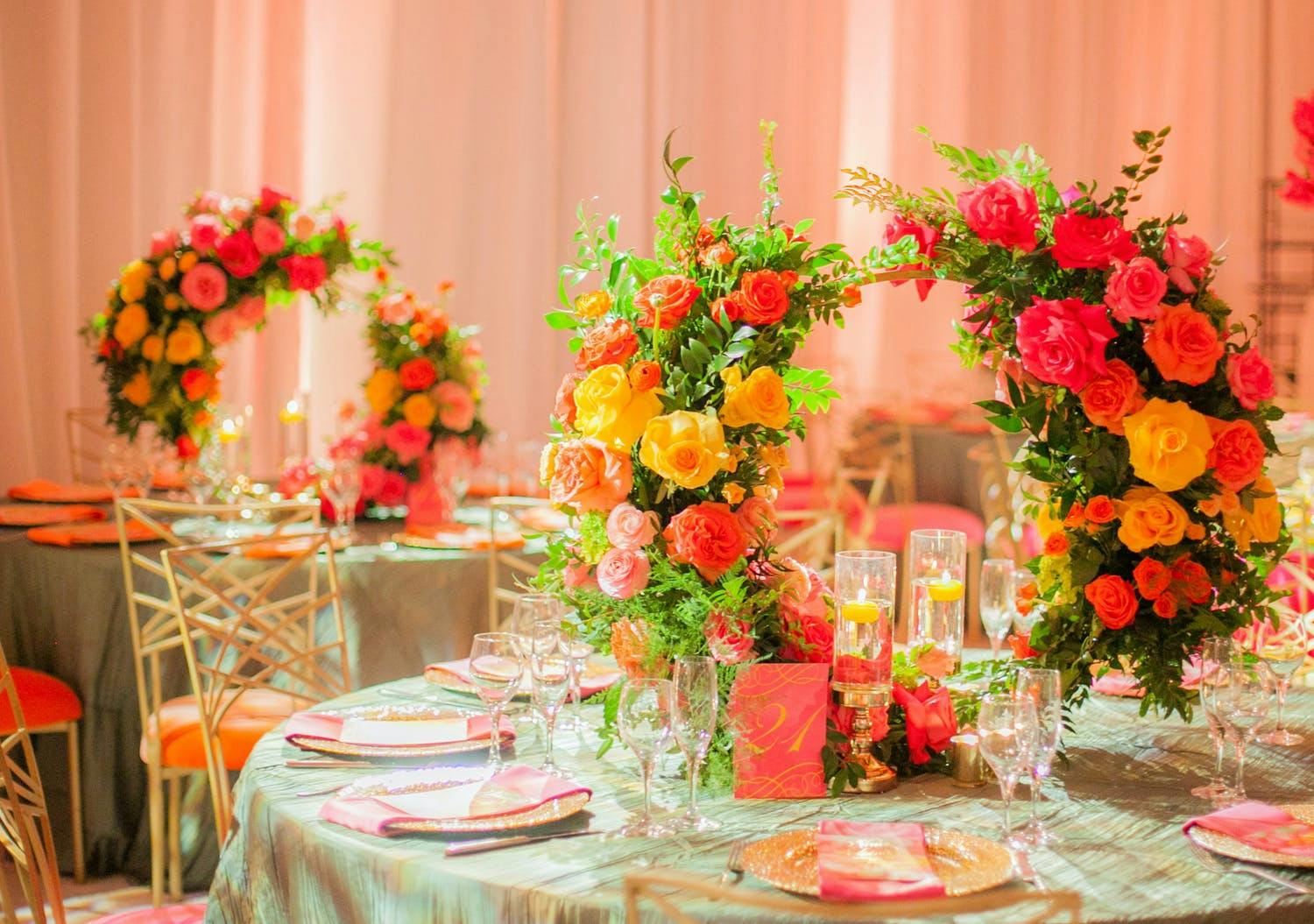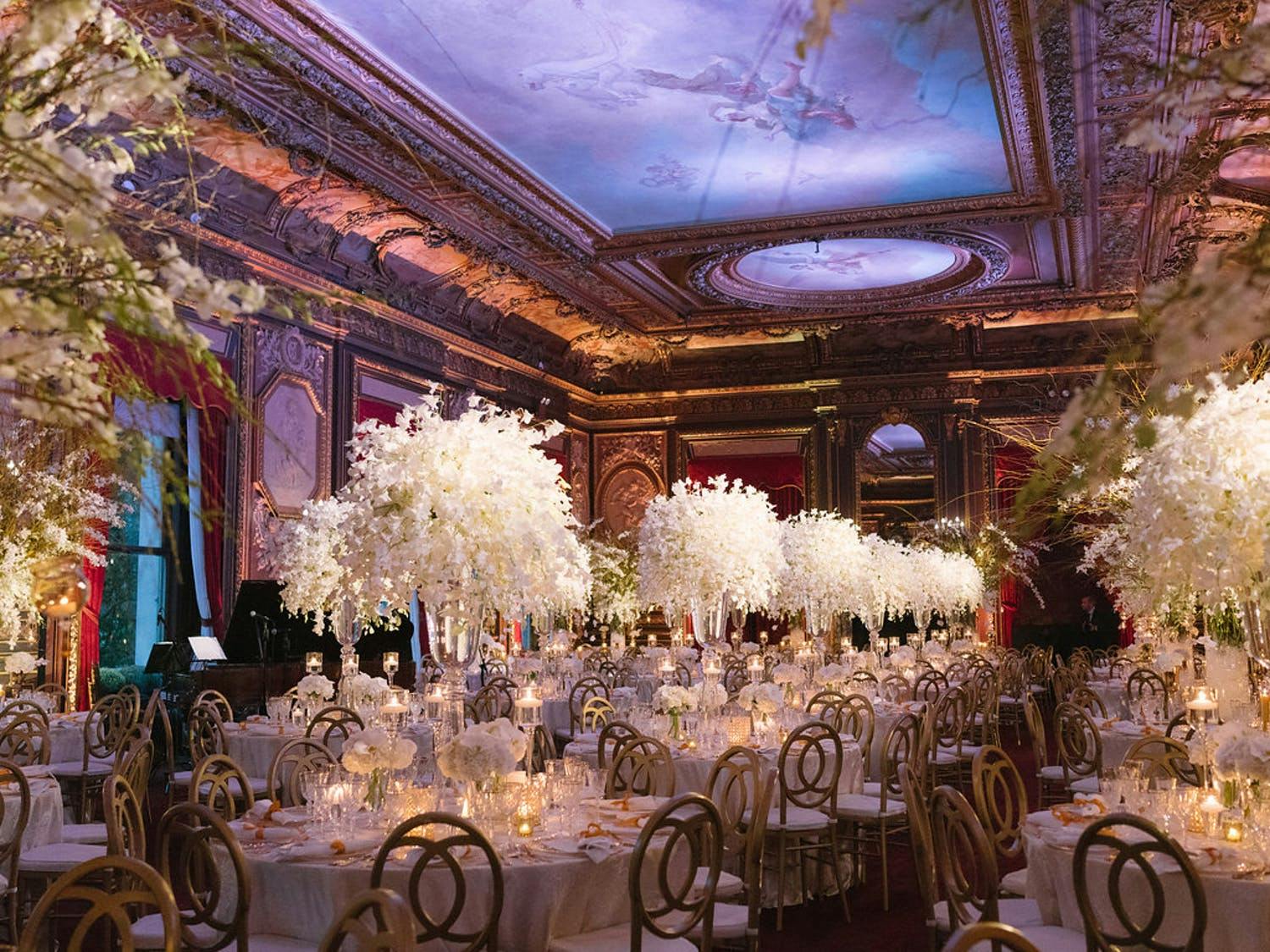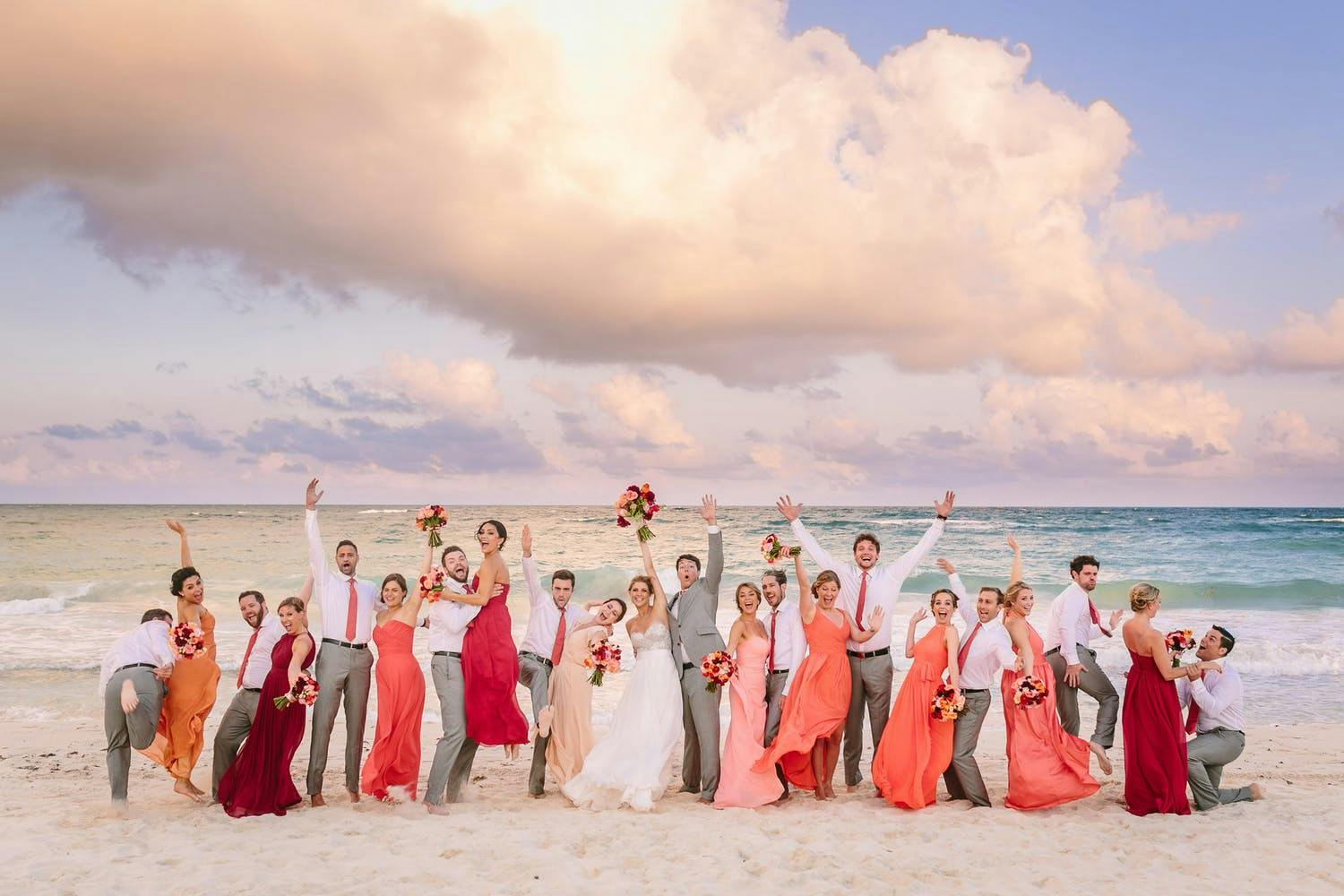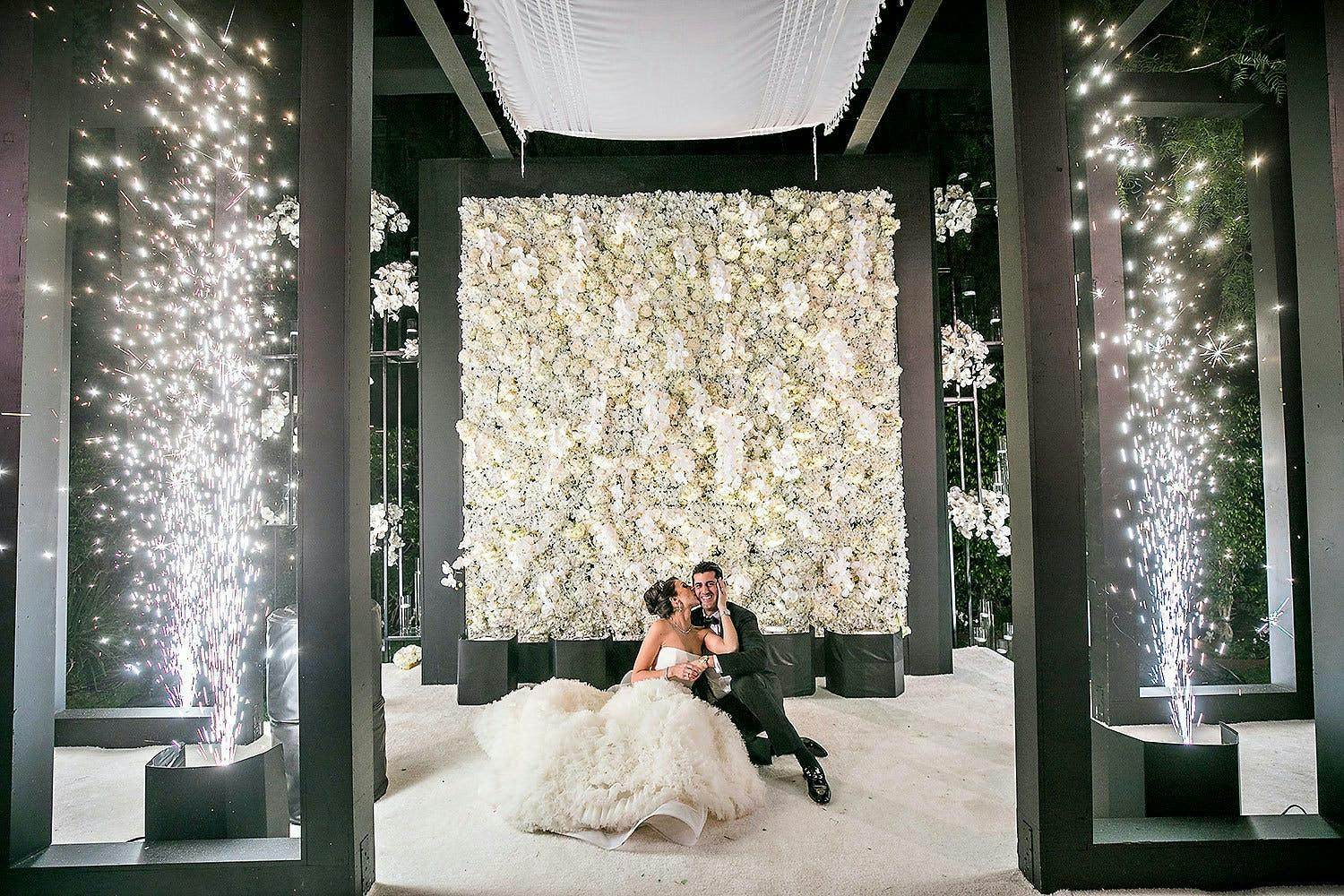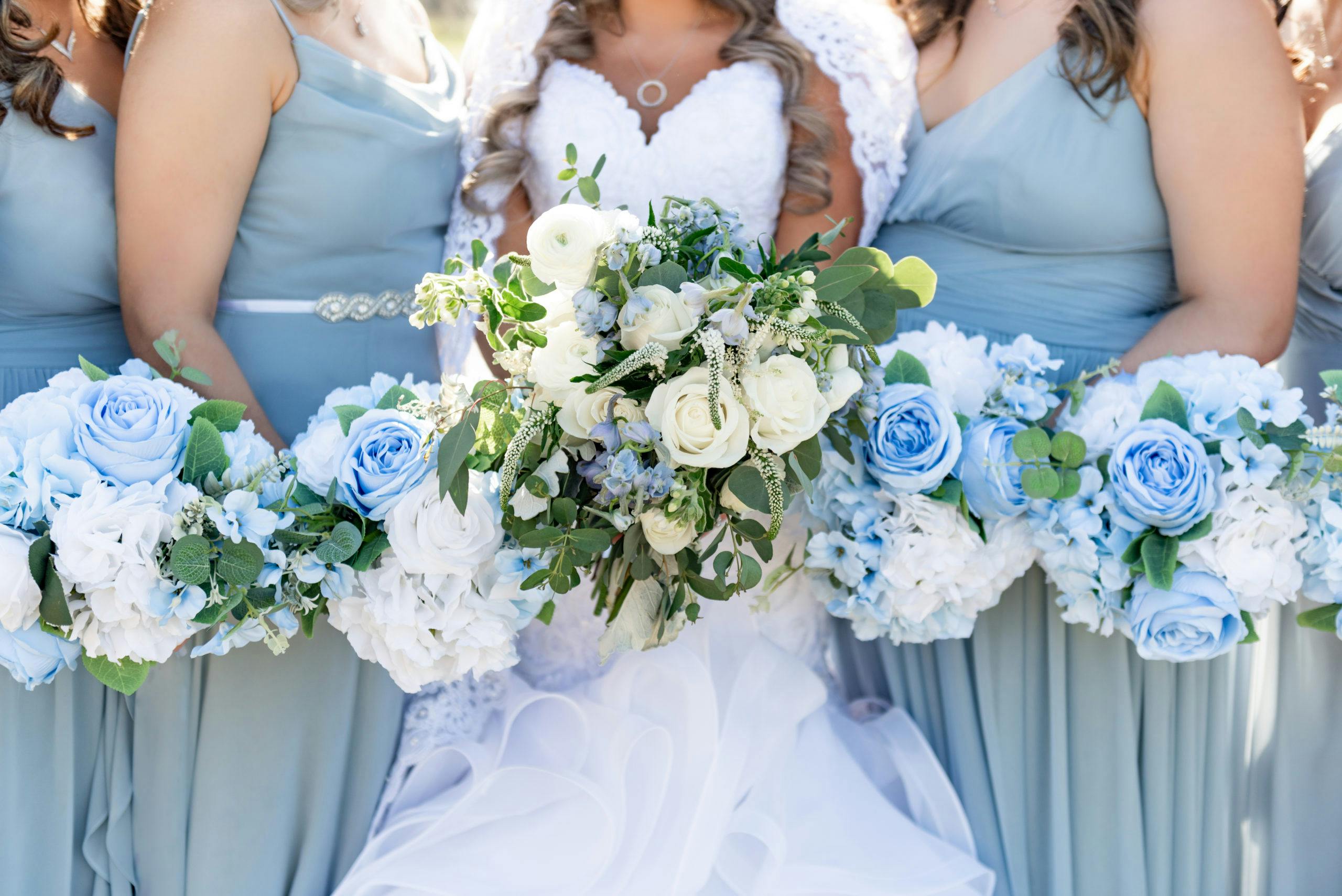Wedding colors determine the tone, mood, and style of your celebration. Much like the sun in a solar system, a color palette is the guiding force that sets every element of your celebration in motion.
Think about it. An all-white wedding evokes a completely different feel than a technicolor reception with vibrant wedding color schemes. Similarly, a red and black wedding feels different than a pastel-toned affair.
Before you begin the fun-filled process of selecting wedding décor and attire, it’s important to know your color schemes. Your wedding color palette will create an experience for your guests — starting from the moment that they open their wedding invitations.
How to Pick Wedding Colors

With all of the possible color combinations, you might be wondering “What should my wedding colors be?”
Several factors may determine your final wedding colors. Colors — found everywhere in the natural world — come with psychological and cultural associations. Even the seasons come with their own set of color associations.
For example, you’re more likely to find a jewel-toned palette at a winter wedding than a spring wedding. Likewise, summer weddings tend to feature more citrus tones than autumn celebrations.
Of course, no two humans are the same. Consequently, different people may have different connections with the same colors. When it comes to choosing your wedding colors, we recommend starting with a list of your favorite colors. Compare your list it to your beloved’s list to narrow your palette to hues you both adore.
How to Choose Wedding Colors with the Help of PartySlate
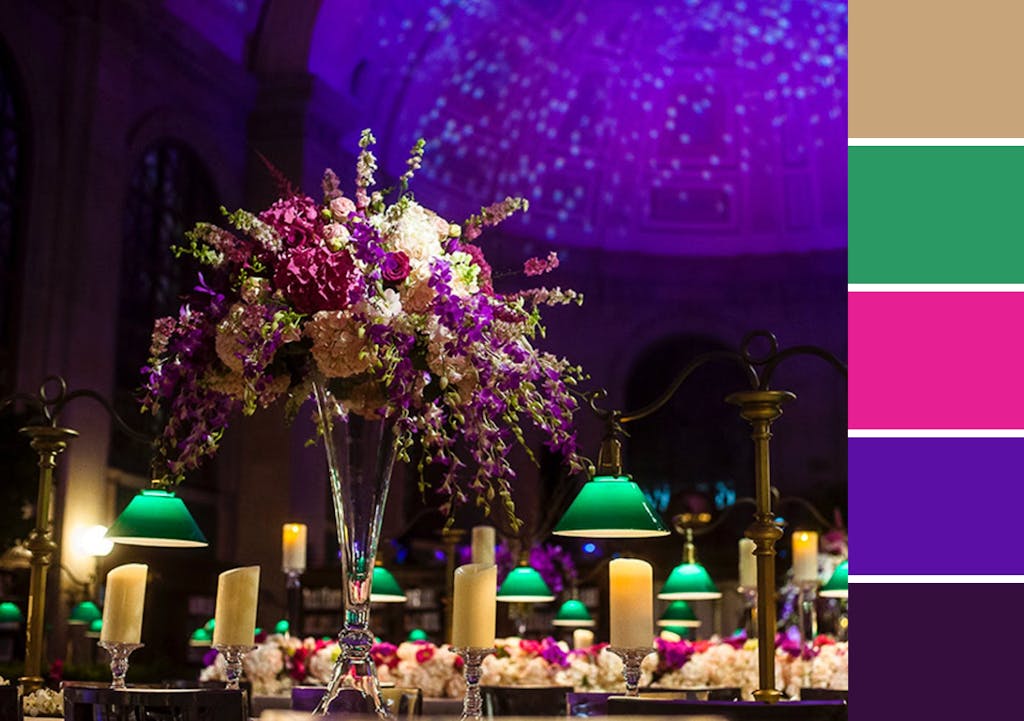
Keep scrolling to find informative and inspiring articles on various wedding color schemes. Here, you’ll find everything from seasonal color palettes to intriguing color combinations.
You can also head to PartySlate, an event planning resource, to find additional inspiration. Browse real weddings from our Wedding Gallery and find the latest trends at the Wedding Idea Gallery.
See something you like? Make sure to “heart” your favorite images and save them to an Idea Slate. You can share your favorite ideas with your wedding planner and design team.
Spring wedding colors evoke new growth, pastel wildflowers, and fresh greenery. As the weather warms and the last of the ice thaws — we especially look forward to the beginning of the wedding season.
We love the bright bolds and dreamy pastels of a summer landscape. And with so many colorful summer wedding colors to choose from — it’s no wonder June is one of the most popular months to host a wedding celebration.
A black and white wedding is both traditional and modern. These stunning wedding colors can bring any theme or style to life —whether you desire a hip loft wedding or classic ballroom celebration.
In a world of fast-paced innovations and continuous change, neutral color palettes invite us to take a step back and experience the now. From cool and tranquil grays to elevated creams and beiges, neutral hues set the scene for a stunning wedding celebration — regardless of theme or style.

From bright lemon to deep amber, this captivating hue is taking over the wedding scene. Best of all, with over 50 flower varieties that can be found in yellow, it’s easy to find an in-season bloom to match your wedding style.
PEOPLE ALSO ASK…
What Are Examples of Color Schemes?

According to color theory, a color scheme is the selection of specific color combinations used in design work. For those of us afraid of making the ultimate “clashing” error, there’s no need to worry. Colors schemes offer a simple set of guidelines for selecting stunning color combinations. Here are three popular color schemes used throughout the design world:
• Monochromatic Color Scheme: Emphasis on a single hue with various shades, tints, and tones
• Complementary Color Scheme: The combination of a primary and secondary color
• Analogous Color Scheme: Three closely-related colors on the color wheel
A basic understanding of color schemes can help guide you as you select your wedding colors. We also recommend relying on your wedding planner for direction and inspiration when it comes to choosing color combinations.
What Are Popular Wedding Colors?

Wedding trends may come and go, but some wedding color schemes will always be popular. For example, we’ve all heard of the “white wedding” (thank you, Billy Idol). Other classic combinations include black and white — as well as navy and blush.
Moreover, couples often select their wedding color palette based on their wedding date. Spring colors, for example, tend to be light and ethereal. Winter colors, on the other hand, are often dark and bold. Click to discover PartySlate’s top seasonal wedding color palettes:
• Spring
• Summer
• Fall
• Winter
Lastly, couples often rely on the “Pantone Color of the Year” to inspire their wedding palette and décor. For over two decades, the Pantone Color Institute has used trend-forcasting research to to select the “colour of the year.” You can read about much-discussed color choices of 2021 here.
What Are Traditional Wedding Colors?

Traditional wedding colors tend to eschew eclectic or funky combinations. At PartySlate, we often see monochromatic color schemes that revolve around a single color — be it white, pink, or blue.
We also find many wedding color palettes that combine two contrasting colors. Popular examples of this dual-color combination include:
• Navy and Blush
• Burgundy and Gold
• Coral and Navy
Of course, that’s just the tip of the iceberg (or should we say, rainbow?). Search PartySlate’s Wedding Gallery to see real wedding celebrations. You can even filter your results by wedding colors and styles.
What Do Colors Mean in a Wedding?

It’s true, colors have always conveyed psychological and cultural meanings. Go back as far as Ancient Rome, and you’ll find the color purple representing “authority” and “wealth.” It turns out that there’s a reason why togas were dyed purple, as opposed to green.
Of course, wedding colors mean different things in different cultures. For example, American brides tend to wear white (representing innocence and purity) on their wedding day. Chinese brides, on the other hand, often wear red — as red represents happiness and good fortune.
Even the shade of a color can affect its meaning. Take a look at the color red, for example. A darker shade of red might evoke drama and passion in Western culture, while a softer shade (like pink) might elicit thoughts of softness and gentleness.
Remember, colors can also have personal meanings. One couple may associate the color “blue” with sadness (aka, “the blues”). A different couple, however, may think of whimsy and playfulness. Ever hear Rhapsody in Blue?
With this in mind, make sure to consider your own personal preferences and associations when selecting your wedding color palette.
In addition to consulting your wedding planner and design team, you can use PartySlate to find cutting-edge inspiration as well as timeless ideas.
